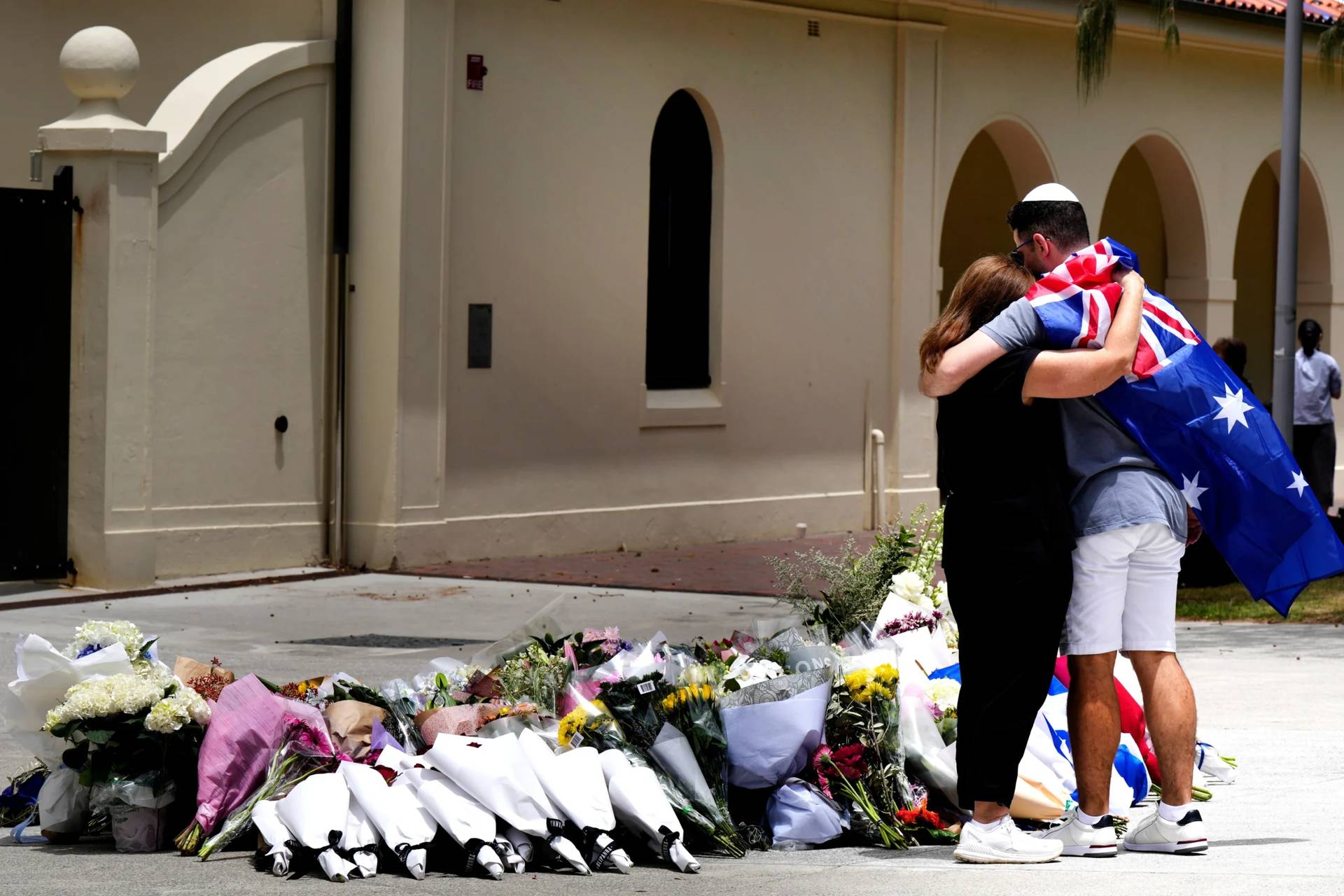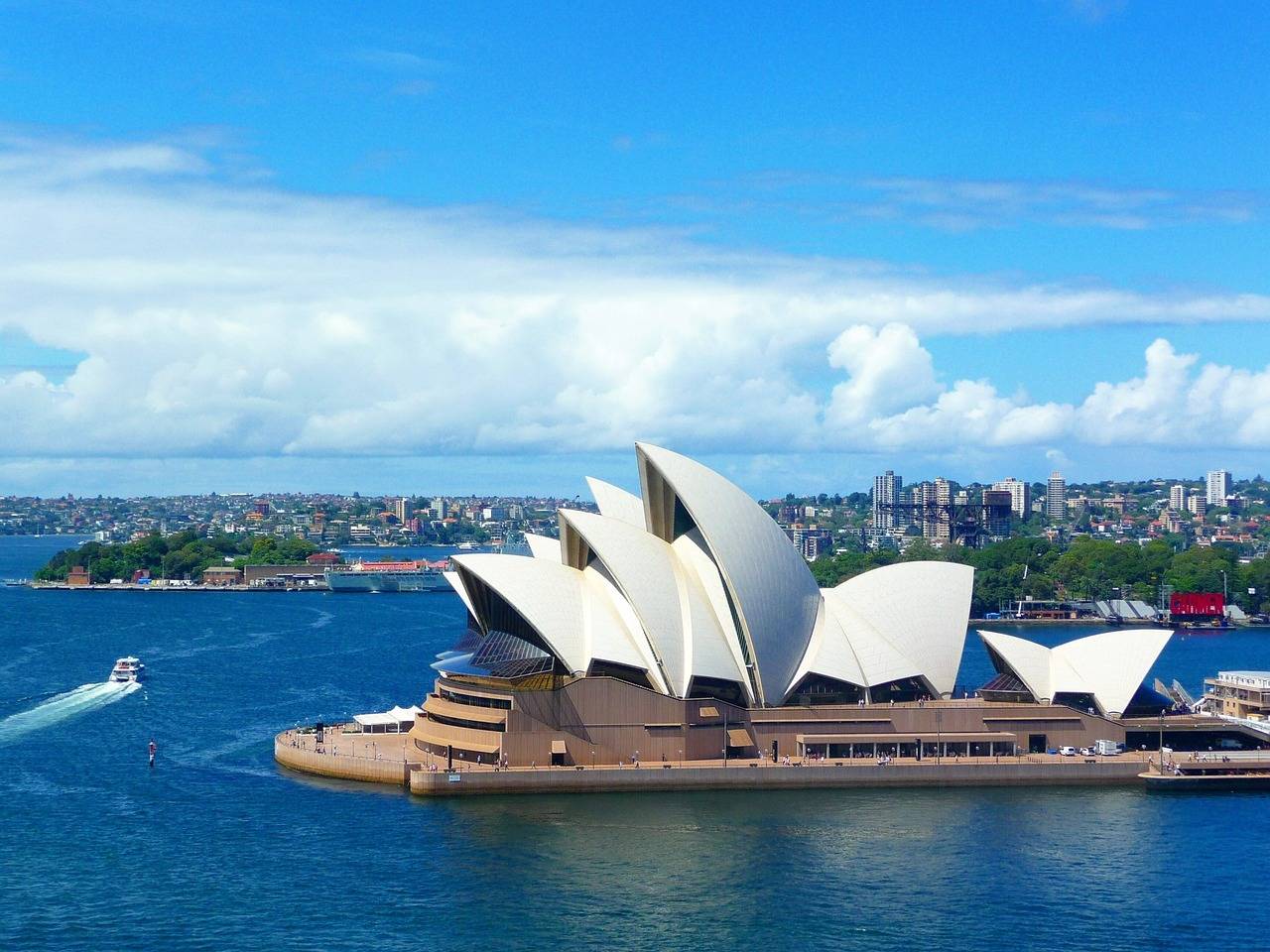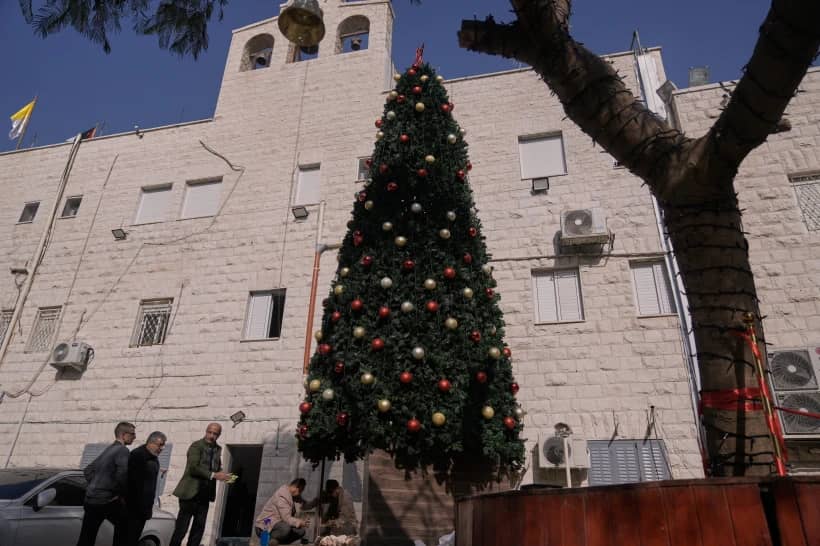ROME – Long before “synodality” became the buzzword of this pontificate, and long before a world-wide summit on the topic was called for by Pope Francis that’s being described as his legacy, the Catholic Church in Australia was getting ready to launch its own major synodal moment.
Called a “Plenary Council,” it’s the first such gathering in Australia since 1937, and it will be celebrated across nine months, bookended by assemblies from October 3-10 and in July 2022. The first of these was officially inaugurated by the president of the Plenary Council, Archbishop Timothy Costelloe, who celebrated the opening Mass at Perth’s St Mary’s Cathedral Sunday morning.
The nine-month adventure comes after three-and-a-half years of preparation, including a significant period of national consultation, with over 220,000 people taking part.
The Council was meant to be in-person, but COVID-19 restrictions have made that impossible. As a result, the 270 delegates, including bishops, priests and laity, all having equal rights and responsibilities, will be meeting via zoom to work both in a plenary-assembly mode and in smaller groups.
The Masses and the assemblies are being live-streamed, and they remain available for everyone who wants to watch them afterwards.
“There’s so much that the Church provides for our country, from social welfare to education and hospital systems,” said Danielle Fairthorne, a mother and religious education teacher who will be taking part as a Melbourne delegate. “I really hope that we can build a new future for the Church, one that focuses on building trust with its people and one that really goes back to Jesus’s message of love, encounter and journeying with people.”
Seeing the “great need to restore trust,” Fairthorne told Crux, the openness and transparency of the entire process is a good “starting point.”
Bishops have been open in acknowledging that the Church can’t just put up a sign saying “it’s business as usual,” she said, and this intrigued her into becoming part of the journey.
“We have to be very honest with where the Church is at in Australia,” she said. “It’s hurt a lot of people; it’s lost a lot of trust. Our census tells us that there’s more people describing as non-religious, and they were probably baptized Catholics but have decided to move away from faith and religion.”
The pain and hurt stems mainly, but not only, from the clerical sexual abuse crisis. The Royal Commission into Institutional Responses to Child Sexual Abuse was established in 2013 by the Australian government, and its work ended in 2017, with a report released in December arguing, among other things, that the Catholic Church in Australia was guilty of massive failures in its responsibility to protect children.
Hopes and fears
When an event of this magnitude is put together, many things can go wrong. From the trivial, technical ones, such as the WiFi not working or the coffee machine breaking. But the stakes in Australia are much higher than simply making the trains run on time.
“My first hope [for the council] is that the Holy Spirit will ensure that we face the facts of where we as the Church in Australia, however uncomfortable they may be,” said Archbishop Mark Coleridge of Brisbane. “My second hope is that we will then be able to follow the Spirit in thinking laterally about where we might go and how we might get there.”
You don’t have to be a member of the #PlenaryCouncil to take part…this is for everyone https://t.co/nGVhi0S7Ta
— Mark Coleridge (@ArchbishopMark) October 2, 2021
Coleridge said that means more than just spouting lofty ideals.
“This will mean bold and practical thinking about what we need to let go and what we need to take on board. It will mean thinking laterally so that we don’t just recycle old and worn-out proposals and strategies but come up with things we’ve never seen or thought of before.”
Fairthorne agrees, and she too sets the bar high.
“I’m quite hopeful at being part of an opportunity to be a part of such a momentous, historical event. I have a lot of hope in the fact that they’ve decided to have such a transparent approach and that is extremely reflective of the synodal practice being put forth by Pope Francis. It has involved as many Catholic people as possible, in a spirit of genuine dialogue.”
She believes the process has already been fruitful, “and we haven’t even started the Council!” Yet what’s been done thus far, including prayer and free exchange of ideas, with preparatory documents and those that will lead the discussions made readily available to all, has given this young woman “great hope that a lot of good transformation and re-imagination of the Church in Australia is going to happen.”
Bishop Richard Umbers highlighted the fact that when the Plenary Council was called, there was no such a thing as COVID-19.
“So much has changed in the past two years and the Plenary Council will need to speak into this so-called ‘new normal,’” he told Crux. “One of the most significant changes is that the ability to attend Mass has been disrupted by a series of lockdowns and church closures and many of our faithful have become used to streaming liturgies. One of my biggest hopes is that the Council will see this practical reality as an opportunity for formation and offer practical ways of reigniting the centrality of the Eucharist for the faithful.”
For denizens of social media, “Bishop Down Umber,” as he’s known on Twitter, is best known for his lively and engaging online presence. This “young” bishop – he turned 50 earlier this year – wants a Church rooted in the Eucharist, and he believes it would be “wonderful” if the Council resolved to seek out the possibility of hosting the International Eucharist Congress in 2028 on the 100th anniversary from the last, and only, time it was held in Australia.
Sandwiched between NSW politics and a NRL Grand Final we have the virtual start of the Plenary Council. Here are some thoughts:
— Bishop Down Umber (@BishopUmbers) October 2, 2021
When it comes to “fears” or possible apprehensions, all three had little to say. In the case of Fairthorne, her concern turns around to living up to the expectations of being one of the young and female voices in this process. But experience thus far has shown her that she will have the opportunity to add her voice to a lively debate.
“I don’t feel that the bishops or anyone ever put any limits to what we can contribute or say,” she said. “I’m looking forward to entering into a rich and respectful dialogue with others. My hope is that we’re able to take the time needed over the next week to sit, reflect and pray on our decisions, so that we can collectively come up with some invigorating, concrete reflections to renew the Gospel of Love in Australia, so people on the peripheries can feel that in a tangible way.”
“I don’t have too many fears about the Council,” Coleridge, one of the masterminds behind the initiative, told Crux. “I did early on in the process, but as I’ve come to believe that it’s the work of the Holy Spirit I’ve come to see and say that it can’t fail. It may not produce what I or others want, but whatever emerges eventually will be the work and gift of the Holy Spirit. That’s why I feel quite peaceful on the eve.”
That’s not to say, Coleridge added, there haven’t been challenges.
“The spirit of evil has tried hard during the process of preparation, and it will keep trying during the first assembly and beyond,” the prelate said. “The spirit of evil will always stir fear and anxiety, lack of trust in the process and in the Spirit driving it. But the Spirit of God will work though and beyond all that. There will be moments of division, a struggle for control where politics and ideology seem to prevail, as there have been to this point. But there’s more to the Council than politics and ideology; there’s something greater than Solomon. And the something greater will prevail in the end: of that I am quietly certain.”
In the years since the Royal Commission, the Australian Church has become “a humbler Church, a poorer Church, a more inclusive and welcoming Church, a more joyful Church, a more united Church, a more missionary Church,” Coleridge argued. All of this has had “huge implications for how we choose to structure and govern ourselves, how we allocate resources, how we choose and form our leaders. This is why we’ll have to make bold decisions.”
The roots of the Plenary Council reach far back before the Royal Commission, he said, acknowledging however, that it was a mighty catalyst in the process that led to the bishops’ decision to move to a Council. And, he said, so too was the election of Pope Francis.
“In one sense the Council is underpinned by the convergence of the Final Report of the Royal Commission and the exhortation Evangelium Gaudium,” Coleridge said. “Both summon the Church to face past failings and to become now the Church we’re called to be – a call to conversion therefore.”
“The Church urgently needs to rediscover empathy,” Umbers said. “A lack of empathy enabled the horrors of the past and unless we rediscover empathy, we risk facilitating different horrors in the future.”
One of the main difficulties facing the Church at the moment is the temptation to treat bureaucracy as the solution to the failures in leadership that facilitated the sexual abuse crisis and other failures of the Church.
Yet “good governance principles found in the corporate world can assist of course, but fundamentally, we still need to care about people,” he said. “That’s the difference between the good shepherd Jesus speaks of in the Gospel, and the hireling who just lives off the fat of the lamb. We can’t allow ourselves to be a sort of ‘deflecting bureaucracy’ where success is equated with good risk management; where we think the best type of field hospital is one without any patients!”
A Council for all, or a moot point
The reality of the Church experienced by Bishop Columba Macbeth-Green of the Diocese of Wilcannia-Forbes is a tad-bit different than that of Fairthorne, Coleridge and Umbers. Geographically speaking, his diocese is the largest in the country, and it has neither a coastline nor a city with more than 20,000 people. Just to give an idea, it’s the size of France, but with the population of an average town in the United States: There are 105,000 people, only 30,000 of whom are Catholics. It’s a region covered by this bag-pipe playing prelate, who spends most of his days driving his camper trailer along the solitary roads of the far West region of New South Wales in the company of his fluffy white dog.
His hope for the upcoming Council is that the Church in Australia will get “a well needed injection of zeal for the spreading of the Gospel.”
In order for this to be possible, however, the Council needs first to address the inequalities that exist between well-resourced metropolitan dioceses and less resourced and sometimes struggling rural and remote dioceses.
He believes that “if this is not addressed, then any other decisions of the Council may only be able to be implemented by dioceses that have the resources to do so which could divide the Church in Australia along the lines of richer dioceses versus the poorer dioceses.”
Macbeth-Green also hopes that the Council might help the Church connect with more people in preaching Christ. He believes that the Church in Australia has alienated itself from the “ordinary, salt of the earth Catholics,” who used to make up its active membership.
“While the sexual abuse crises have done a lot of damage in this area, there is also the problem of what I call ‘professional Catholicism’,” he said, referring to “Catholics with well-paid professional careers, often employed in the Church, who have assumed leadership roles. These people bring their intellectual and professional gifts to the Church in many ways, [but] they can foster a Church that’s ‘Middle Class,’ often with a focus on academia, courses, programs and the like.”
All of that’s fine, but not if priests reduce their peaching to what Francis described in Evangelii Gaudium as “giving a lecture,” using big words and theological concepts that alienate the majority of people.
“I hope the Plenary Council can help remedy this disconnect, and not contribute to it,” said Macbeth-Green.
This down-to-earth bishop also fears the inherence that ideological positions can have in the Council- both from insiders and outsiders, who’re going to the media to voice their views of what should be debated, regardless of these areas being outside of the jurisdiction of the Council or contrary to Church teaching.
“The Plenary Council is a place where honest dialogue, particularly listening, is to take place, always focused on Jesus Christ and open to the guidance of the Holy Spirit,” he said. “The purpose of the Council is to strengthen the life of the Church. Obviously, to be effective members of the Council, a person must love the Church of Christ and be mindful of her mission to sanctify the world.”
“If members see the Council as a type of ‘parliament’ where the will of certain groups, through lobbying and political maneuvering, can be imposed on the Church to reform the Church according to their own agenda like a merely political institution, then the ultimate goals of the Church, like the striving for holiness of her members and the transformation of the world through Faith and conversion, might be lost,” said Macbeth-Green.
Another key element for the success of the Council, is taking into consideration that those who participated in the listening process are those “who had something to say,” and both the time and means to do so. He noted that Australia has a Catholic population of six million, but just 220,000 people have taken part in the process despite the resources allocated to draw them in.
“One of the reasons why people did not participate in these sessions could be apathy – not something worth worrying about, or they are happy with the Church in Australia, or they did not think that anything would change or that they would be listened to,” Macbeth-Green said.
“The submissions received reflect the ideas and suggestions of a large part of the Church in Australia, but not all of the Church in Australia. Therefore, members of the Plenary Council need to take into consideration these silent voices as well.”
Follow Inés San Martín on Twitter: @inesanma

















